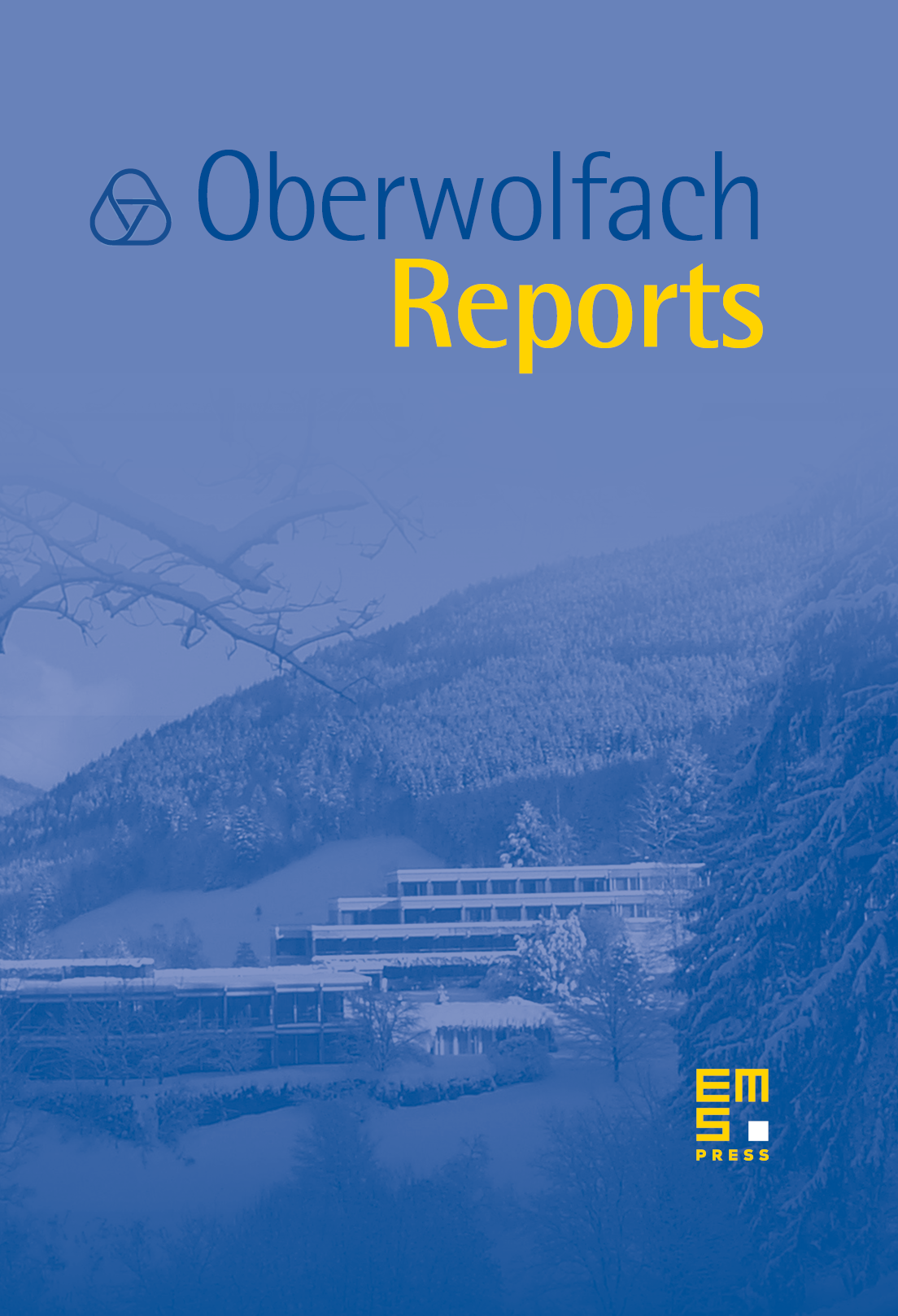PDE and Materials
John M. Ball
Oxford University, United KingdomRichard D. James
107 Akerman Hall, Minneapolis, USAStefan Müller
Universität Bonn, Germany

Abstract
This meeting brought together a carefully selected group of mathematicians, physicists, material scientists and engineers to discuss and review the impact of modern mathematical methods on the understanding of material behaviour and the design of new materials. A key issue is that the material behaviour is determined by physical processes at many different spatial and temporal scales which cannot be simulataneously resolved by brute force computation. There are a number of heuristic approaches (such as the quasicontinuum method or accelerated dynamics) to address the multiscale problem, but a mathematical theory which allows one to understand when and it what sense these approaches provide a good approximation to the full problem is still in its infancy.
Central themes of the meeting were (spatial) microstructures, the relation between atomistic and continuum models, the treatment of multiple temporal scales, and the influence of randomness and the use of methods from statistical mechanics. The recent theory of microstructures in crystalline materials which undergo solid-solid phase transitions has lead to a very inspiring bridge between materials science and the mathematical analysis of regularity and of oscillations in nonlinear partial differential equations, in particular the theory of compensated compactness by F. Murat and L. Tartar. At the meeting L. Székelyhidi presented a recent breakthrough in this area, a characterization of all compact sets in the space of matrices which support a nontrivial microstructure. Other important contributions include new regularity results by C. Melcher and the use of new rigidity estimates and topological constructions to derive theories of lower-dimensional elastic objects (G. Dolzmann). Regularizations, e.g., due to interfacial energies or strain-gradient terms in elasticity or exchange energy terms in magnetic materials, prevent the formation of the mathematically idealized infinitely fine microstructures and break the dilation invariance of the problem by introducing a length scale. Interestingly this single additional scale can lead to the formation of complex patterns on a multitude of scales (‘domain branching’) and S. Conti presented interesting new results for type-I superconductors, based on subtle interpolation inequalities. In a different direction J.M. Robbins showed how the control of topological singularities through the shape of the container might lead to new switching mechanics for liquid crystals. E. Salje presented new experimental data and theoretical analyses on the interaction between mechanical microstructure and chemical behaviour and E. Quandt showed how the evolution of domain structures in magnetostrictive devices influences the performance of engineering devices.
The connection between atomistic and continuum models is mathematically at its very beginning, not the least because the powerful theory of pde and the calculus of variations at the continuum level has so far no equally powerful counterpart for discrete systems. C. Ortner presented first results from his PhD thesis for a one-dimensional numerical analysis of the quasicontinuum method, a numerical scheme which tries to switch adaptively between continuum and atomistic models. G. Friesecke showed how a rigorous analysis of screening effects leads to a linear scaling of the energy with the number of atoms (‘stability of matter’). F. Theil presented a new approach to derive the Boltzmann equation from a discrete model of interacting atoms (without recollisions). This was closely related to an inspiring lecture by O. Penrose on the relation between microscopic reversibility and macroscopic irreversibility, which sparked a very lively discussion. More generally new rigorous results in statistical mechanics (the oldest multiscale method) played a key role at the meeting, notably in the talks by E. Presutti and R. Kotecký. S. Luckhaus presented a new model Hamiltonian that can serve as a starting point for a statistical mechanics of solids, including a description of defects, such as dislocations or grain boundaries. The influence of randonmess and heterogeneity on the behaviour at macroscopical scales was analyzed in the talks by N. Dirr, G. Menon, B. Niethammer and A. Planes.
The strong separation of time scales is one of the major bottlenecks in the use of molecular dynamics simulations. Indeed often the processes which are most interesting from the point of view of applications in chemistry, physics and biology occur at times scales which are well beyond any MD simulation with realistic potentials. The organized a special session to contrast some of the current approaches in the mathematics, physics and computational communities (C. Schütte, E. Vanden-Eijnden, A. Voter). This was complemented by A. Mielke's rigorous analysis of two-scale Hamiltonian systems and M. Ortiz new approach to microstructure evolution by a global minimization principle in space-time. In addition to the lectures the very special environment of Oberwolfach provided an excellent opportunity for informal discussions, allowing for an open exchange of ideas between people which usually attend separate groups of conferences.
Cite this article
John M. Ball, Richard D. James, Stefan Müller, PDE and Materials. Oberwolfach Rep. 3 (2006), no. 4, pp. 2631–2698
DOI 10.4171/OWR/2006/44